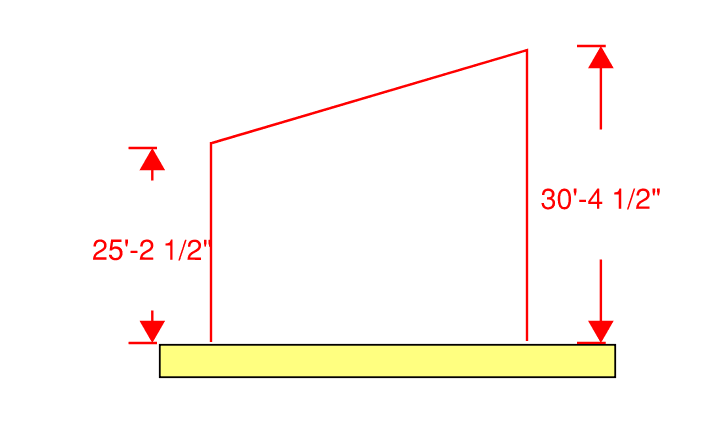Samwise Gamgee
Structural
- Oct 7, 2021
- 118
I have a monolsope roof with varying heights on either side. (High side : 30'-4 1/2", Low side : 25'-2 1/2"). Mean roof height = 27'-9"
When modeling in structural RAM system, I modeled it as a mean roof height of 28'-6". Is that considered a conservative/safe approach for the application of wind etc as I already accounted for few more inches above the mean roof height ?

When modeling in structural RAM system, I modeled it as a mean roof height of 28'-6". Is that considered a conservative/safe approach for the application of wind etc as I already accounted for few more inches above the mean roof height ?

